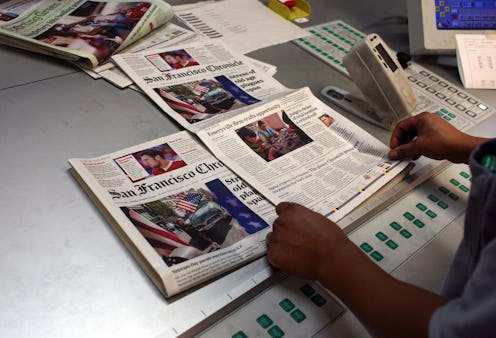News
Kill Times New Roman, Save $400 Million
A Pittsburgh-area teenager has made a remarkable finding — the U.S. could be saving about $400 million per year in ink costs, if states and the federal government change their default typeface. The typeface currently in use, as anybody who's had to write a school essay knows, is Times New Roman. Simply by switching to Garamond, which utilizes thinner letters, the savings begin to pile up.
This started off as a project for Suvir Mirchandani's sixth-grade science fair. Since moving up from elementary school, Mirchandani observed that the amount of printed handouts he and his classmates were getting from their teachers had increased sharply. Aware, even at that age, of issues of environmental sustainability, he started trying to scheme a way to increase the efficiency of the worksheet glut.
Rather than confront the issue the way many schools have, by trying to reuse, recycle or cut back on the amount of paper being used, Mirchandani zeroed in on ink as a hefty culprit for increased costs. He assessed a sampling of worksheets to determine the most common letters used — which turned out to be e, t, a, o, and r — and found that by switching to Garamond, his district would save as much as $21,000.
Mirchandani submitted his findings to the Journal for Emerging Investigators , founded by Harvard grad students in 2011 as a place for the scientific research of middle and high-schoolers.
Co-founder Sarah Fankhauser says she and their peer reviewers were wowed — and curious.
We were so impressed. We really could really see the real-world application in Suvir's paper. ... How much potential savings is really out there?
Mirchandani, now 14 years old, seems to have figured out just that. Running the same process with five sample pages from the Government Printing Office, he found that the federal government could be saving $136 million per year by making the switch, which amounts to nearly 30 percent of their total ink expenditures. State governments adopting the change would net an additional $234 million, totaling the eye-popping figure of $400 million in potential savings.
Gary Somerset, the manager of public relations for the GPO, has called Mirchandani's research "remarkable," but whether it will actually spur any change is quite another matter. The GPO, he explained, is increasingly turning to digitization to reduce costs and impact, now producing just 2,500 pages per day as compared to 20,000 in 1994.
Mirchandani acknowledges this, but he's still hoping his findings will be put into effect.
They can't convert everything to a digital format; not everyone is able to access information online. Some things still have to be printed.
And frankly, who came blame him? If we'd thought up and demonstrated a way to save hundreds of millions so simply, we wouldn't want to go quietly into the night, either.
Luckily, Mirchandani's work isn't any less valuable just because the government might not take action — it's valuable for private consumers, too. The next time you've got a heavy load of printing to do, try taking Garamond for a spin.
